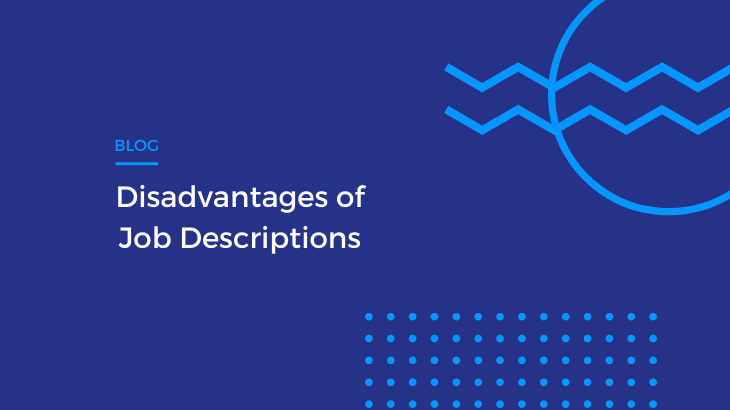
Job Descriptions are considered a key part of hiring and managing employees, but what are the disadvantages?
In this blog we’ll discuss what the key disadvantages of job descriptions are so you can use job descriptions effectively in your business.
A job description is a written document that describes the responsibilities, duties, related tasks and skills needed to achieve success in the job.
The purpose of a job description is to get clarity on the role internally and then use it as a framework for attracting and assessing potential candidates.
In short, yes. And we think there are various reasons why;
Despite us encouraging employers to create a job description for every role they hire, there are some disadvantages to this.
And it’s worth thinking carefully about these problems before you start writing your job description.
Further Resources – Job Description Templates for B2B Tech Marketing Jobs
Reading the job description is an important step for any prospective candidate before they start the interview process with your business.
Ultimately they want to understand what you want them to do and whether or not it’s something they’d like to do.
And sometimes using a unique or unusual title makes it hard for the candidate to understand the level of the role.
Is this a step up for me or a step back?
As an example, let’s say your Tech business was looking to hire a Marketing Lead.
Is a Marketing Lead more senior than a Head of Marketing or less senior.
And unfortunately, if it’s not easy for the candidate to understand this, it’s less likely they’re going to invest their time finding out. And you could be missing out on great talent.
Further Reading – The Ultimate Guide to Writing Job Descriptions
Having very precise and clear responsibilities for some jobs is a good idea. Particularly if you’re a well established business with well defined processes and structures. If your hiring for a new marketing job, it’s worthwhile thinking about the job design first.
But what happens if you’re a Startup?
Startups by their very nature are always experimenting, and never more so than in the marketing department.
Tomorrow you may need to pivot your messaging, try and improve conversions on the website, or test some ads on a new social channel.
So by being too prescriptive in the job description you may miss out on hiring the best people, fail to attract them in the first place, or end up hiring for the wrong skill set altogether.
The best way to tackle this is to think about the broad objectives you want your marketer to work towards. Those could be;
Clearly you’d want to get more granular with those objectives and create some specific SMART goals, but for this purpose we’re just thinking about broad objectives.
And once you have those in place, you can describe the responsibilities by describing the objectives. By doing this, it gives you more room to shift the role from one tactic to another.
As an example, it could look like this;
Another key disadvantage of job descriptions is that they’re static documents.
Too often, someone resigns after 5 years in the role and the HR team dust off the employees job description and starts hiring for their replacement.
However, in that 5 years a lot may have changed. The job may have developed and broadened to meet new business objectives. The marketing that the job description is requiring may be outdated, or it may now be much harder to hire someone with the skills you need for the budget you have.
So just hoping that you can use a job description you’ve previously used, may lead to longer hiring times and increased hiring costs.
Instead, a job description should be updated every year so that it’s reflective of how the job has grown or changed. By doing this, the job description becomes less static and more of an active document that’s tweaked and developed over time.
And then when you come to recruit for the job again, you’ll have a document you can use immediately and one that’s reflective of the role, how it fits in with helping your company achieve its goals and is reflective of the talent available in the market.
A job description is primarily an internal document. And yes, it’s something that should be shared with a potential candidate. But it’s not something used to attract the right talent in the first place.
A job description is not a job advert.
But sadly, too often companies use a job description as a job advert.
The outcome?
Simple. Less job applications.
And that’s because a job description is too formal. It doesn’t talk about the benefits to someone joining your company in this marketing role.
In addition to using sections of your job description a job advert should cover the following;
You also need to think about what might be appealing to the type of person you’re going to hire.
The more you understand your target audience – what they find tough in their current role and what they’d relish going forward – the easier it’ll be to get that messaging across to them and increase the likelihood of them applying to your marketing job.
But whatever you do, don’t just use the job description as a job advert.
So whilst we’d always recommend creating a job description for your marketing job, there are some disadvantages to job descriptions.
The key is remember that they’re primarily an internal document and something that needs to be referred to and updated regularly.
Subscribe to our fortnightly newsletter to hear about our latest podcasts, blogs, career advice & jobs.